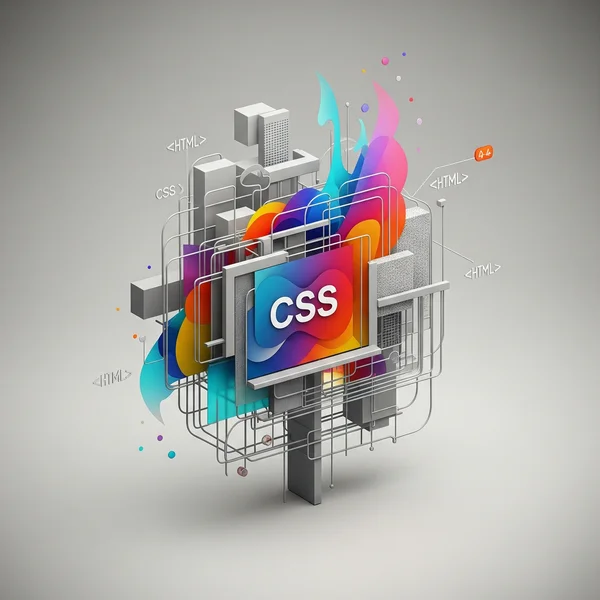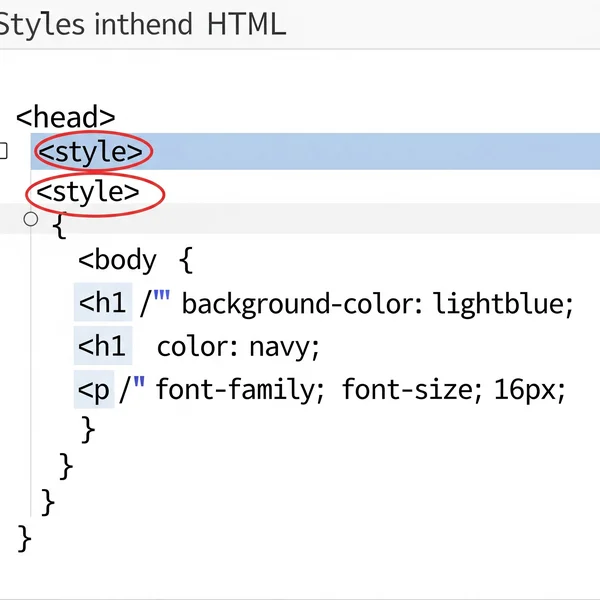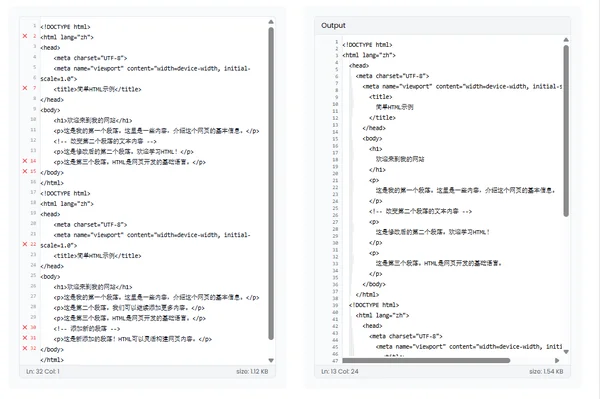Preview HTML & CSS Together: Best Practices for Accuracy
Seeing the Full Picture: Mastering HTML and CSS Previews
In web development, HTML provides the skeleton of your page, while CSS brings it to life with style and design. But how do you ensure these two fundamental technologies work in perfect harmony? Accurately being able to preview html css together is not just a convenience; it's essential for efficient development and achieving the desired visual outcome. How to preview html and css effectively? This guide explores the best practices for viewing your HTML structure alongside its css styling preview, and how an online html css viewer can be an invaluable tool in this process.
Why Previewing HTML and CSS Simultaneously is Crucial
Viewing HTML in isolation only tells half the story. The true appearance and layout of your webpage emerge only when CSS is applied. Why is it so important to view html with css at the same time?
Ensuring Structural Integrity Meets Visual Design
Simultaneous previewing allows you to instantly see how your HTML structural integrity aligns with your intended visual design. Are your headings styled correctly? Do your divs arrange as planned? This immediate feedback loop is vital for catching discrepancies early, ensuring that the html viewer online experience reflects your design goals.

Catching Layout and Styling Conflicts Early
CSS can be tricky. Specificity wars, unintended inheritance, or conflicting rules can lead to unexpected layout conflicts or styling conflicts. Being able to preview html css together helps you identify and resolve these issues as they arise, rather than discovering them later in the development cycle.
Streamlining the Development Workflow
Constantly switching between your code editor and browser, then manually refreshing, can break your focus and slow down your development workflow. A good html css viewer that offers live html preview css capabilities can significantly streamline this process, allowing for quicker iterations and more productive coding sessions.
Methods for Including CSS in Your HTML for Preview
To preview html css, you first need to ensure your CSS is accessible to the HTML document being viewed. There are several ways to include CSS:
Internal CSS using <style> Tags: Pros and Cons for Previewing
Placing your CSS rules directly within <style> tags in the <head> of your HTML document is known as using internal CSS.
- Pros for Previewing: This method is excellent for
online html css previewtools because the HTML file is self-contained. The viewer can easily parse and apply these styles. - Cons for Previewing: For larger projects, this can make the HTML file bulky and harder to manage. It's best for single-page previews or smaller style sets.

Inline Styles: Quick Tweaks vs. Maintainability
Inline styles are CSS rules applied directly to individual HTML elements using the style attribute.
- Pros for Previewing: Great for
quick tweaksand seeing immediate changes to a specific element during acss styling preview. - Cons for Previewing: They override other styles and make
maintainabilitydifficult for larger projects. Use them sparingly for testing.
External CSS Files (<link> tag): Challenges for Simple Online Viewers
Linking to external CSS files using the <link> tag in the HTML <head> is the standard for most projects.
- Pros for Previewing (Locally/DevTools): Keeps HTML and CSS separate and organized.
- Cons for Previewing (Simple Online Viewers): Many basic
online viewers challengesarise here. They might not be able to fetch or correctly interpret paths to local external CSS files due to browser security (CORS) or pathing issues, leading to an unstyled preview.
Best Practices for Accurate HTML & CSS Styling Preview
What's the best way to include css for online preview? Follow these best practices for the most accurate results:
Using an Online HTML CSS Viewer for Instant Feedback
Leverage an online HTML CSS viewer that offers instant feedback. These tools are designed to render your HTML and (typically internal) CSS as you type or paste, giving you a real-time understanding of how your design is shaping up.

Keeping CSS Self-Contained for Easy Online Previewing
When using an online html viewer, the most reliable way to ensure your css styling preview is accurate is to make your CSS self-contained css within the HTML document itself, usually via <style> tags. This bypasses issues with external file paths.
Verifying Paths for Linked Resources
If you are using external CSS and your preview environment (like a local server or advanced html viewer css support tool) is supposed to load them, always double-check that the paths in your <link> tags are correct relative to your HTML file.
Testing Across Different "Viewports"
Modern web design is responsive. If your html css viewer offers options to simulate different screen sizes or viewports, use them to ensure your HTML and CSS work well together across various devices.
How Our Tool Facilitates HTML and CSS Preview
Our online HTML viewing platform is built to help you efficiently preview html css together.
Seamless Rendering of HTML with Internal CSS
We ensure seamless rendering of your HTML documents when CSS is included directly within <style> tags. Paste your combined HTML and CSS, and our html viewer online will display the styled result accurately.
Real-Time Updates as You Tweak HTML Structure and CSS Rules
Experience true live html preview css with real-time updates. As you modify your HTML structure or adjust CSS rules in the input area, the preview pane refreshes instantly, allowing for rapid iteration and experimentation.
What About External CSS Files with Our Online HTML Viewer?
Currently, for the most reliable css styling preview with this particular online viewer, embedding your CSS using <style> tags within your HTML document is recommended. While direct fetching of all types of external, locally-pathed CSS files can be complex for purely browser-based online tools, we are always exploring ways to enhance this capability. For publicly accessible external CSS via URLs, functionality may vary or be subject to CORS policies.

Achieve Perfect HTML/CSS Harmony with Effective Previewing
Achieving that perfect synergy between your HTML structure and CSS design requires diligent preview html css practices. By understanding how to best include your styles and leveraging the right html css viewer, you can streamline your workflow and build with greater confidence.
Start building beautifully styled web pages with confidence. Use our online HTML viewing tool to ensure your HTML and CSS are in perfect sync! What's your biggest challenge when trying to preview HTML and CSS changes together?
Previewing HTML and CSS Effectively
Here are some common questions about effectively previewing HTML and CSS:
-
Can I preview HTML with JavaScript using an online HTML CSS viewer? Many
online HTML CSS viewers, including ours, can execute simple, self-contained JavaScript placed within<script>tags in your HTML. However, for complex JavaScript interactions, especially those involving external libraries or significant DOM manipulation, a browser's DevTools might be more suitable. The primary focus of mosthtml viewers onlineis on HTML structure andcss styling preview. -
What's the best way to include CSS for quick online previewing? For the most reliable and quickest
online html css preview, embedding your CSS rules within<style>tags directly in the<head>of your HTML document is generally thebest way to include css for online preview. This ensures the viewer has all necessary information in one place. -
How do online HTML viewers handle CSS specificity or cascade? Reputable
online HTML viewersaim to replicate standard browser behavior. This means they should respectcss specificityrules and the CSS cascade just as a regular browser would for the code you provide. The styles that are most specific or appear later in the cascade (with equal specificity) will generally take precedence. You can test html css specificity with our tool. -
Why doesn't my external CSS file show up in an online HTML viewer? Why doesn't my external css show up? There are several common reasons:
- Incorrect Path: The
hrefattribute in your<link>tag might not correctly point to the CSS file's location, especially if it's a relative local path. - CORS Policy: If the CSS file is hosted on a different domain than the viewer, Cross-Origin Resource Sharing (CORS) policies might prevent the browser (and thus the viewer) from accessing it.
- Viewer Limitations: Some simpler
online viewersmight not have the capability to fetch and processexternal CSS files, especially local ones, for security or complexity reasons.
- Incorrect Path: The